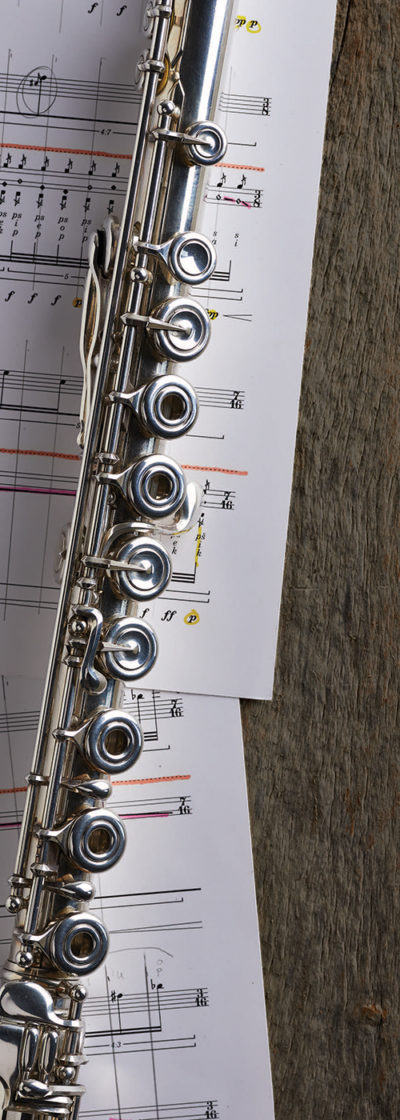
Photo: Pat Piasecki; Score: Trevor Baca
The typical path to becoming a classical musician is as fixed as it is rigorous: With enough talent, effort, and luck, an aspiring musician earns a degree and lands an orchestra job. Jessi Rosinski, MBA’15, is a professional flutist who stepped off that path—and never looked back.
Rosinski says she picked up the flute as a child “on instinct and intuition,” drawn to the instrument’s direct, unmediated nature. “It’s truly an extension of the body. It’s really vocal and human; what you can do with your breath is what you can do with your flute,” Rosinski says. “It’s very organic, which makes it precious.”
Her ambitions evolved in college, when the aspiring classical musician realized that “contemporary music is where I really shine. Orchestra music doesn’t light me up the same way.” After graduation, instead of seeking an orchestra position, she went for a master’s degree, choosing the New England Conservatory (NEC) because of Boston’s burgeoning contemporary music scene. Today, Rosinski performs with several new-music ensembles, including the Callithumpian Consort, Boston Modern Orchestra Project, and Sound Icon; she also teaches entrepreneurial musicianship at NEC and does consulting for arts organizations.
Contemporary music, with its dissonance and complexity, can be a hard sell to some audiences, she acknowledges. But to Rosinski, new music has an urgency that makes it vital. “What drives me as a musician is bringing to life something exciting and relevant,” says Rosinski. “Contemporary music is here and now.” Playing newly written music, she says, also allows her to form collaborative relationships with composers. “I love working on new pieces and premieres. It’s awesome to help a composer bring a piece to life,” she says.
Her Babson degree—earned, she says, “to see if my voice could go beyond my instrument”—supports her ever-evolving goals. “Contemporary music and entrepreneurship are both about creating new things and finding ways to make the impossible possible,” she says. “They’re the same in so many ways.”
